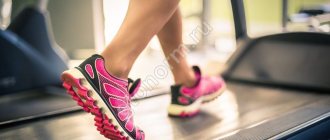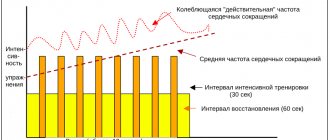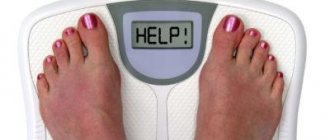It's more than just running in place.
When you first visit the gym, the treadmill may seem like the safest place to be: you don't have to share it with others or return it to its place, like returning dumbbells or a barbell. Additionally, it is very difficult to misuse a treadmill, unlike suspension or cable trainers.
However, once you decide to start the seemingly most basic exercise - running in place - using a treadmill, you may well find that using this machine is not as easy as you expected. Modern treadmills are equipped with a ton of dials and buttons that let you customize your workout program. Therefore, by simply clicking the "quick start" button, you risk missing out on a whole world of opportunities that can make your workout even more effective.
Moreover, using only one program, you may become bored. It doesn't matter how interesting the podcast you listen to while you're on the treadmill is. It's no secret that running in place is a fairly monotonous activity, and if you use the same program every time, it becomes doubly boring.
Want to add some variety to your treadmill workouts and make them more dynamic? Well, it's time to get acquainted with all these buttons.
What tinctures should be made before classes?
The main settings of the treadmill are the speed of the belt and its inclination angle. Beginners should start at a moderate speed that mimics the speed of running or walking in everyday life. A little advice - for walking or running, set the incline angle to at least 1.5%. Working out on a flat, non-sloping surface means the machine will do all the work for you. Since the belt moves on its own, with a 0% incline, your muscles are practically not used - you are literally just putting your foot down and lifting it up again, rather than having to force yourself forward like you would on the street. At the same time, by setting the incline to 1.5%, you will force your muscles to tense up much more, and thereby make your workout much more effective.
“Set the blade angle to at least 1.5%.”
Understanding the treadmill settings
Tracks can be mechanical or electrical. Mechanical ones are easier to control - their tape moves under the influence of the steps of the runner. You can increase the load by tilting the surface, simulating running uphill. If you stop, the track also stops. There is nothing complicated in the settings of such a projectile. But the downside is that it is impossible to maintain the same pace of training on a mechanical simulator, since the belt is completely dependent.
Electrical devices have much more settings and the track moves regardless of the steps of the runner. Thus, you can maintain the same speed for a certain time, which enhances the effect of training.
Electronic control panels may vary depending on the model, but the basic settings for almost all devices are the same: first set the speed of the web, then press the start button.
Some models have sensors and can monitor heart rate, calories burned, and even independently determine the level of exercise if you enter your data into them.
To understand all this, just read the basic instructions. If you come to work out in the fitness room, then a trainer will help you figure out the settings.
- Do not neglect the security key; be sure to attach it to your clothing.
- Try to wear tight clothing so that it does not get caught in the moving mechanism of the canvas.
- Small children and pets should not be near you.
- If you suddenly suddenly feel unwell or the device behaves strangely (the speed involuntarily increased, something sparked), immediately pull off the security key to block the system.
- When using an electric exercise machine, never leave the cable plugged in after exercise.
- Do not jump off the belt while it is moving; get off only after the belt has stopped.
- There should be a free space of 2 m around the treadmill.
Which preset workout programs are best for a beginner?
Treadmill training programs are very diverse and vary from machine to machine. Distance training tends to be the most popular, as many people strive to achieve a specific goal, be it a 5K or a marathon. Interval running and incline running are also some of the most common workouts.
It is worth noting that running at a given speed and at the same pace is extremely good; it is especially suitable for those who want to run a given distance in a certain time. At the same time, sprint intervals are good for those who want to train at high intensity or increase their speed. One of the benefits of running this way is the development of fast-twitch muscle fibers, which will improve your ability to perform power movements.
Running on an incline will increase the strength of certain parts of the body and also improve overall muscular endurance. During such a run, almost all the muscles of your back body (muscles of the legs, buttocks, back and shoulders) are involved in the work.
When should you use a heart rate monitor?
Heart rate sensors and panels are very useful for tracking your heart rate at the beginning and end of a workout. While moving, it is best to measure your heart rate by attaching the sensor to your chest, wrist or forearm.
Be sure to monitor your heart rate every workout because getting into the correct heart rate zone ensures that your body is performing at your target. For example, if your goal is to increase your endurance, then your heart rate should be approximately 70-80% of your maximum value. It is this range of heart rate that will develop your ability to effectively supply oxygen to muscle tissue and rid it of carbon dioxide.
Are there ways to make your workout less boring?
Setting a goal and tracking your workout is a great way to combat boredom. For example, by connecting your tablet or phone to the treadmill, you can use the dedicated app to track all your workout data in real time and browse the web at the same time. This way of getting distracted will be very helpful for a beginner. And although connecting and setting up will take a few minutes of your time, it will take you a couple more steps closer to your goal.
Setting a clear goal is another way to prevent yourself from getting bored. Often, people who use the “quick start” option do not last even a couple of workouts on the treadmill. Even the simplest goal, such as running a race in a certain time or running a certain distance, will force you to focus on achieving the result. And by creating your own training plan, you are sure to become a winner.
Preparing to run
It is important to know not only how to use a treadmill correctly, but also how to avoid injury. A very important point is preparation for running. You should never start training immediately with intense movements,
especially if these are your first classes and your body is not used to the stress.
Don’t forget about the right equipment: you should be wearing comfortable sneakers or sneakers and clothing that does not restrict movement. The last meal should be at least 40 minutes before the start of training.
Rules for preparing for exercise on a treadmill:
- Before getting on the machine, do a short warm-up for 5-7 minutes: bending down and to the side, several squats, swinging your arms and legs.
- Before starting the belt, stand on the sides of the walkway. Press “start” and get on the track at the moment when it just begins to move slowly.
- Start with a calm walk (3 km/h), gradually increasing your speed.
How is running on a machine different from running outside?
The physical fitness requirements for indoor running are often lower than for outdoor running. This is because the treadmill can run continuously, at a set pace, and without changing the speed or incline. Also, treadmills simply physically cannot change the direction of your movement, and this will reduce the risk of injury. In addition, running on a machine requires less energy from you. However, these benefits may come at a disadvantage because when you run on a machine, your body gets into a rhythm and relaxes because you don't have to overcome the natural obstacles you encounter when running outdoors.
How to turn on a treadmill in an air conditioned gym
The treadmill is a panacea for maintaining weight and muscle tone at any age. You can exercise at home or go to sports centers, enjoying running and socializing. Many people have no idea how to turn on the treadmill at the gym and waste time waiting for help. Let's study!
How to turn on the treadmill in the club?
- Many treadmills are electrically powered. Connect to it. If the unit has an auxiliary toggle switch, turn it on. Is your treadmill display lit up? So she's ready to go.
- Stand on the panel on the sides of the canvas. If you stand on the belt while turning on the device, there is a risk of overloading the motor and causing injury!
- The monitor has a key hole. Insert the security key into it, and attach the second part to your belt so that the track turns off if a fall occurs.
- Press "start" and follow the instructions on the monitor. Almost all modern models have weight parameters. Enter them and press the SELECT button.
- On the right and left of the monitor there are buttons to decrease and increase speed (SPEED), usually they are triangular.
- After the belt starts moving, stand on it and start training. Correlate the level of intensity of movement with physical fitness. If the load is small, complicate the task by changing the inclination using the INCLINE button.
Knowing how to turn on the treadmill will help you get started without any assistance. Remember that when purchasing, you need to consult with the seller, check the centering while driving and listen to the sounds of the track.
If you are interested in installing air conditioners , go to the Climate Service website - ustanovka-kondicionera-moskva.ru/. The company's team of professional craftsmen provides services for: installation of air conditioners, repair and maintenance of air conditioners, dismantling of air conditioners.
Source: https://transcendrussia.ru/poleznye-sovety/kak-vklyuchit-begovuyu-dorozhku-v-trenazhernom-zale-s-ustanovlennym-kondicionerom/
Are there any treadmill etiquette rules that must be followed?
Certainly! First, if you sound like a herd of elephants while running on the treadmill, it can most often be explained by poor running technique. Running or stomping too loudly could also mean your machine has the wrong incline. No matter your weight, height or fitness level, technique can always be improved, just try to make your movements more efficient and your steps softer.
Secondly, keep your equipment clean. Nobody wants to run on surfaces that are slippery with sweat. Always wipe down the handles, display and belt after use.
How to care for your treadmill?
All device models must be properly maintained. Regardless of what kind of exercise treadmills are used, they need:
- Pull-ups, which are performed strictly according to the instructions for the sports equipment. To do this, use a special key included in the simulator kit.
- Centering, performed by rotating the tool in different directions until the desired result is obtained.
- Replacement of the canvas, which is carried out by specialists at home when it is severely worn.
- Lubrication, the frequency of which depends on how intensively the treadmill is used. It is considered optimal to renew the lubricant after 300 km.
- Cleaning is carried out when dirty with a damp cloth or vacuum cleaner.
Three Tips to Avoid Embarrassing Treadmill Injuries
After all, there is nothing more depressing to self-esteem than falling from the exercise machine.
The treadmill is perhaps the best exercise machine for weight loss. Most often, people get acquainted with this miracle machine in the autumn-winter period, when the length of daylight and weather conditions do not allow jogging in the open air and people do fitness at home or in gyms.
But cardio workouts on the warm, dry, high-speed treadmill can sometimes pose a risk of injury. Due to the unnatural narrow position of the body, exercisers may experience tension in the thigh muscles responsible for flexion/extension of the legs, as well as pain in the heel tendons and shins.
So, before you press the "Start" button on your treadmill, remember these simple tips that will help you avoid awkward falls and nasty injuries.
1. Choose the mode difficulty correctly
You've probably seen those guys in the gym who increase the speed of the treadmill belt and try to keep up with it, moving faster and faster, while their stomping echoes throughout the room. They don't look like they're having fun. If anything, their hips, knees and hamstrings certainly aren't having any fun: running like this can lead to a lot of pain in these areas because your stride lengthens and your feet land much further than your body would be comfortable with. Don't be like those guys. Focus on maintaining proper, natural strides, or even reduce the pace of the track to a comfortable level where you won't overexert yourself.
Don't practice on autopilot
The treadmill belt is a flat, even surface with a uniform coating (unless you dump a bag of gravel on it, of course). A treadmill is the exact opposite of uneven, winding or hilly streets and paths, which require your body to work harder against natural obstacles when running. Unfortunately, this monotony comes with a risk of injury, since maintaining the same speed constantly stresses the same muscle groups. You can avoid this by periodically changing the speed and nature of your workout. Don't run at the same pace all the time, but try to set an interval of movement of the belt, at which the speed will first increase slightly and then decrease again. Slowing down your running speed will help your muscles rest and recover.
Resist the urge to end your workout early
Most treadmill injuries are caused by poor running technique. You can save a lot of money on a trip to the hospital by learning what movements you may be doing incorrectly. Yes, running on a machine is not the most fun activity, but don't let boredom overcome you - just keep doing it and soon you will learn how to do it right and how to do it wrong. After all, practice is the path to perfection.
So how can you overcome boredom and not leave the path ahead of time? First of all, remember to change your workout periodically, as mentioned above. You can also invite a friend along for some much-needed stimulation, plus there's now a competitive element to your workout. Among other things, you can entertain yourself by listening to music while working out on the treadmill. Studies have shown that listening to music during exercise reduces feelings of fatigue and increases satisfaction from exercise.
Treadmill training programs
Add some variety to your indoor running program with one of these workout routines.
Some people absolutely love treadmills and choose this machine for exercise. Others, on the contrary, hate these cardio machines with all their hearts and try to avoid them. Luckily, for those treadmill enthusiasts, we've got seven new ways to make the most of your time on this cool machine. Plus, we'll tell you about four fun workout programs you can use to add variety to your routine. In turn, treadmill haters will also find a lot of useful information in this article: we will talk about a variety of treadmill workouts that will burn a lot of calories in less than 20 minutes.
Interval training for beginners
A simple but effective interval training is a workout in which sets are performed at different speed intervals. Such training implies that after each subsequent “effort” you will return to your starting speed and rest for some time. A suitable base speed for a beginner is 5 km/h. However, you can freely adjust the starting speed to suit your fitness level or how you feel, as long as you feel comfortable. You'll eventually need to run 10 km/h faster than this baseline, so make sure you can maintain your maximum pace for at least one minute. Don’t worry, since the load on the body will not increase immediately, but gradually, you will be fully prepared for such an “epic” denouement.
First, drive at your base speed for one minute, then increase your speed by 1 km/h. Maintain this speed for another minute and then return to the starting point. For your next “effort”, increase the speed by 2 km/h, and after a minute, return to the base speed for 60 seconds and again increase the speed by 3 km/h for the next push. Continue this pattern for 20 minutes, gradually increasing the pace with each new burst.
10-Minute Treadmill Workout Programs
You should definitely try one of these interval workouts put together by strength and conditioning coach Jamie Lloyd. The peculiarity of these workouts is that they mix the speed of the machine belt and its inclination. If these programs seem too easy to you, then combine two of them into one 20-minute workout.
Before you start running, be sure to warm up your ligaments and muscles by doing a couple of dynamic stretches and an easy five-minute jog. You don't want to injure yourself, right?
To set the desired speed and incline, simply follow the instructions provided in the training program. Usually the speed on treadmills is measured in km/h and the incline is set in %, so just set the required values on the control panel of the machine. Or, if you're already up to speed, adjust the speed to suit your fitness level.
Workout 1
For this workout, you need to set the incline angle to a constant 2%. Change the speed every minute, starting from 5 to 7.5 km/h, for 10 minutes.
Workout 2
Get ready, the inclination of the canvas in this workout is quite high. Start by running at 6 km/h on a 7% incline for 1 minute, then slow down to 5 km/h on a 1% incline for a minute and a half to recover. Repeat the cycle 4 times.
Workout 3
Tilt angle – 1%. Start at 8 km/h for 2 minutes 30 seconds, then slow down to 5.5 km/h for 2 minutes 30 seconds. Repeat for 10 minutes.
Workout 4
It's time to forget about tilt and focus on speed. Set the incline to 0% and run at a constant speed (14-18 km/h, depending on your ability) for 1 minute, then run for 1 minute 30 seconds at 6 km/h. Repeat these cycles 4 times. When trying to calculate your top speed, be extremely careful not to overdo it and fly off the back of the treadmill.
Workout 5
Having to change your treadmill settings every minute can be quite annoying, but at least it will take your mind off your aching feet.
| 0-1 min | 7 km/h, incline 2% |
| 1-2:30 min | 5 km/h, incline 0.5% |
| 2:30-3:30 min | 6.6 km/h, incline 3% |
| 3:30-5 min | 5 km/h, incline 0.5% |
| 5-6 min | 6.5 km/h, incline 4% |
| 6-7:30 min | 5 km/h, incline 0.5% |
| 7:30-8:30 min | 6 km/h, incline 5% |
| 8:30-10 min | 5 km/h, incline 0.5% |
Workout 6
In this workout, the incline gets steeper every minute, but fortunately the speed drops just as quickly.
| 1 min | 10 km/h, incline 1% |
| 2 minutes | 9.5 km/h, incline 2% |
| 3 min | 9 km/h, incline 3% |
| 4 min | 8.5 km/h, incline 4% |
| 5 minutes | 8 km/h, incline 5% |
| 6 min | 7.5 km/h, incline 6% |
| 7 min | 7 km/h, incline 7% |
| 8 min | 6.5 km/h, incline 8% |
| 9 min | 5.5 km/h, incline 9% |
| 10 min | 5 km/h, incline 10% |
Preset treadmill workout programs
Typically, treadmill programs offer the following types of workouts:
Intervals
An interval program is a short, intense run or sprint followed by a short run at a slower pace during which your muscles rest and recover. These cycles can be repeated as many times as you like, but aim for at least 20 minutes of this workout. An interval running program is suitable for those people who engage in sports that require short bursts of energy, such as football, rugby, hockey, etc.
"The Hills"
This running program is very similar to an interval program because it also gives you a more intense workout, but instead of changing the speed of the belt, it changes the incline. If you run a lot outdoors, then the hill program will definitely appeal to you because it will help you cope better with running on hilly terrain, as well as improve your speed on flat ground.
Weight loss program
The name of this program speaks for itself. The weight loss program is designed to get your body into its optimal "fat burning zone," which is about 65% of your maximum heart rate. The trainer calculates this value based on your age and weight, so make sure you enter this data correctly, otherwise the workout may not be effective. Some machines may also ask you to wear a heart rate monitor.
Physical fitness test
The Fitness Test program does exactly what you think it will do - it measures your current fitness level. The treadmill gradually complicates this test, increasing either the speed of the belt, or its inclination angle, or both of these parameters at the same time. This program is worth completing once every month or two months to ensure that you are gradually improving your results.
What to consider when choosing a treadmill
When studying the assortment, pay attention to the characteristics of the main parameters:
Engine and its power
The motor provides maximum belt speed. The choice of power should be made depending on the person’s weight: if he is less than 85 kg, and the training is amateur, then a power of 1.5 hp is sufficient. For heavier weights, choose engines from 1.6 hp. To increase the life of the machine, choose a treadmill with the highest constant power.
Running belt size and frame
Optimal parameters of the tape: length 120 cm, width 40 cm. This is enough for comfortable training. It is important to take into account weight, height and expected speed of movement. Pay attention to the shock absorption system and the thickness of the fabric. The joints will be less stressed if the band is elastic. Multilayer fabric will last longer without replacement.
A frame frame is preferable to a steel frame in order to withstand the weight of the trainee and work on the treadmill with a reserve. Inspect the frame design and check for the presence of a folding mechanism, which affects the price of the simulator.
Dimensions and stability
When choosing a treadmill model for home use, decide on the place where it will be located in the house, make sure that the selected dimensions are suitable. Take a closer look at folding treadmills; keep in mind that their unfolded dimensions may vary. Make sure the machine is stable.
Availability of handrails
Handrails are used for safety: to prevent falls and injury. They should not impede movement; the height and width should be comfortable. Children and older people are not recommended to use the machine without them. The overall stability of the simulator depends on the parameters of the handrails.
Display
The display should display important information: heart rate, distance length, speed and number of calories burned.
Comfort of the control panel
A convenient and understandable control system is an important component of a treadmill. First of all, look:
- backlight and monitor settings so that the displayed information is clearly displayed;
- the presence of a pulse meter, its location;
- availability of programs and dynamic measurement functions;
- additional functions (personal trainer, MP3 player, etc.).
Noise level
An important characteristic for close, cohabiting and demanding neighbors. Mechanical treadmills are the noisiest; electric treadmills operate almost unnoticed. The indicator depends on the characteristics of a particular simulator, choose a model that meets your noise requirements, test the simulator when purchasing.
Maximum user weight
Weight affects the frame and motor of the treadmill. Manufacturers of exercise machines indicate this parameter in the characteristics: it varies from 115 to 180 kg. For regular exercise at home, a treadmill designed for a maximum user weight of at least 120 kg is considered reliable. Choose a treadmill that can support 20 kg more than the heaviest user.
Training on mechanical tracks
Mechanical treadmills without a motor are gaining increasing popularity in the sports environment.
These machines can be used not only for high-intensity sprinting, but also for other workouts that improve your overall endurance level.
Using a mechanical treadmill is very simple: thanks to the design features, the closer you move to the beginning of the belt, the faster it will move, and accordingly, your running will also speed up. To reduce your speed, all you have to do is slow down your pace. This means you can literally adjust your speed on the fly, just like real outdoor running.
While it's incredibly easy to get started on a manual treadmill, working out on one can be very challenging. For example, Woodway manufacturers claim that running on their machines burns 30% more calories than running on conventional treadmills.
The advantage of this machine is that you can get a great workout in a short period of time. You can see this for yourself by trying one of the four training programs presented below. Each of these workouts is designed to develop different skills - speed, strength, endurance and agility. In addition, any of these workouts can be done even during your lunch break, because they will not take up much of your time.
To develop speed
Workout time: 15 minutes (including a 5-minute warm-up and a 2-minute cool-down with off- or low-resistance jogging).
Perform 4 sets of running at moderate speed with high resistance for 20 seconds, alternating with 4 sets of running with no resistance for 40 seconds.
To develop strength
Workout time: 15 minutes (including a 5-minute warm-up and a 2-minute cool-down with off- or low-resistance jogging).
Run at medium speed and with high resistance for 20 seconds, alternate with 40 seconds of jogging with no resistance. Repeat this pattern 8 times.
To develop endurance
Workout time: 17 minutes (including a 5-minute warm-up and a 2-minute cool-down with off- or low-resistance jogging).
Perform 4 sets of low-resistance jogging for 40 seconds and 4 sets of low-resistance jogging for 40 seconds, alternating between the two.
Types of treadmills. Features, pros and cons of each
Mechanical treadmill
There are conventional (mechanical) and magnetic treadmills.
In both cases, the track operates without an electric drive and moves due to the efforts of the athlete. Models with a magnetic loading mechanism have a smoother ride. With ordinary ones, the canvas sometimes moves jerkily.
This type of treadmill is as close as possible to outdoor running conditions. The speed is set by the athlete himself - there is no need to interact with the monitor, which is very helpful during interval running.
Another plus is that such tracks do not require power. But this option is not suitable for runners with weak legs, people with varicose veins and areas of injury.
Mechanical paths either do not have or have a limited choice of slope angle, and you have to stop to change it. Among the models there are compact options weighing 20 kg, and there are huge ones half a meter long and weighing 200 kg. The range of prices is also huge - from 10,000 to 500,000 rubles.
Training plans for marathon and half marathon. and start preparing today.
Electric treadmill
It is driven by an electric motor and works with parameters set on the monitor. Allows you to control and maintain the pace, select a preset program, and adjust the inclination angle. There are heart rate sensors, sometimes built-in multimedia.
The downside is that it is a little further from simulating street running. If the program does not work with intervals, you will have to switch speeds manually, which can be inconvenient. Larger, more expensive, heavier. The range of this type of treadmill is perhaps the widest. Prices range from 20,000 to 1,000,000 rubles and more.
Folding and compact treadmills
Ideal for the home, because they were created for home use. They are less noisy, weigh less and take up very little space.
There are models without handrails. Even paths as thick as a book appeared. This track can be hidden under the bed or put in a closet.
But the disadvantages are also obvious - a limited number of programs, not all have an inclination angle, monitors most often have a minimum set of indicators (speed, time, distance), and the speeds on such tracks are very low - some do not develop a pace of more than 6-8 km/h , making them more of a walking trainer. Prices range from 30,000 to 80,000 rubles.
Professional treadmills
This type was invented for the gym. They are made of high-strength materials, have high wear resistance, and are packed with complex programs and multimedia.
Most likely, it will not be suitable as a treadmill for the home due to its dimensions, weight and price: up to half a meter in length, about 200 kg in weight, from 100,000 to 1,000,000 rubles and more.











